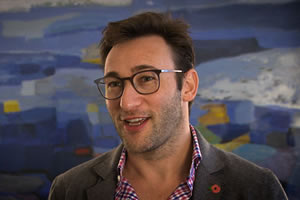 "A business model is an outline of how a company plans to make money with its product and customer base in a specific market. At its core, it explains what product or service a company will sell, how it intends to market that product or service, what kind of expenses it will face, and how it expects to turn a profit," writes Meridith Wood in an article at Fundera.com.
"A business model is an outline of how a company plans to make money with its product and customer base in a specific market. At its core, it explains what product or service a company will sell, how it intends to market that product or service, what kind of expenses it will face, and how it expects to turn a profit," writes Meridith Wood in an article at Fundera.com.
"Because there are so many types of businesses out there, business models are constantly changing; there is no one-size-fits-all model that can be applied to every business. For this reason, it’s imperative to understand how your business makes money — and enough of it to remain profitable after costs are factored into the equation.
"To learn more about the different types of business models and how you can apply them to your own business, jump down to our infographic, or keep reading to learn more about the components of a business model."
View the infographic and read the entire article . . .

 "The staggering rate of store closures that has rocked the retail industry over the past couple of years is expected to continue in 2019, with roughly the same level of closures expected this year.
"The staggering rate of store closures that has rocked the retail industry over the past couple of years is expected to continue in 2019, with roughly the same level of closures expected this year. "When you frame it the right way, your feedback can get your colleague on your side. Get-It-Done Guy explains how to criticize without making enemies."
"When you frame it the right way, your feedback can get your colleague on your side. Get-It-Done Guy explains how to criticize without making enemies."
 "Forget your own desires, and lead with the value you can provide."
"Forget your own desires, and lead with the value you can provide." "There are lies, there are big lies, and then there are myths. And myths are the worst of the three."
"There are lies, there are big lies, and then there are myths. And myths are the worst of the three."
 "Trust and cooperation are not standard in our organizations and yet we know they should be. There are two attributes that every single leader has the opportunity to possess that will help them create the types of organizations we would be proud to call our own. Those two attributes are EMPATHY & PERSPECTIVE."
"Trust and cooperation are not standard in our organizations and yet we know they should be. There are two attributes that every single leader has the opportunity to possess that will help them create the types of organizations we would be proud to call our own. Those two attributes are EMPATHY & PERSPECTIVE." "A business model is an outline of how a company plans to make money with its product and customer base in a specific market. At its core, it explains what product or service a company will sell, how it intends to market that product or service, what kind of expenses it will face, and how it expects to turn a profit," writes Meridith Wood in an article at Fundera.com.
"A business model is an outline of how a company plans to make money with its product and customer base in a specific market. At its core, it explains what product or service a company will sell, how it intends to market that product or service, what kind of expenses it will face, and how it expects to turn a profit," writes Meridith Wood in an article at Fundera.com.